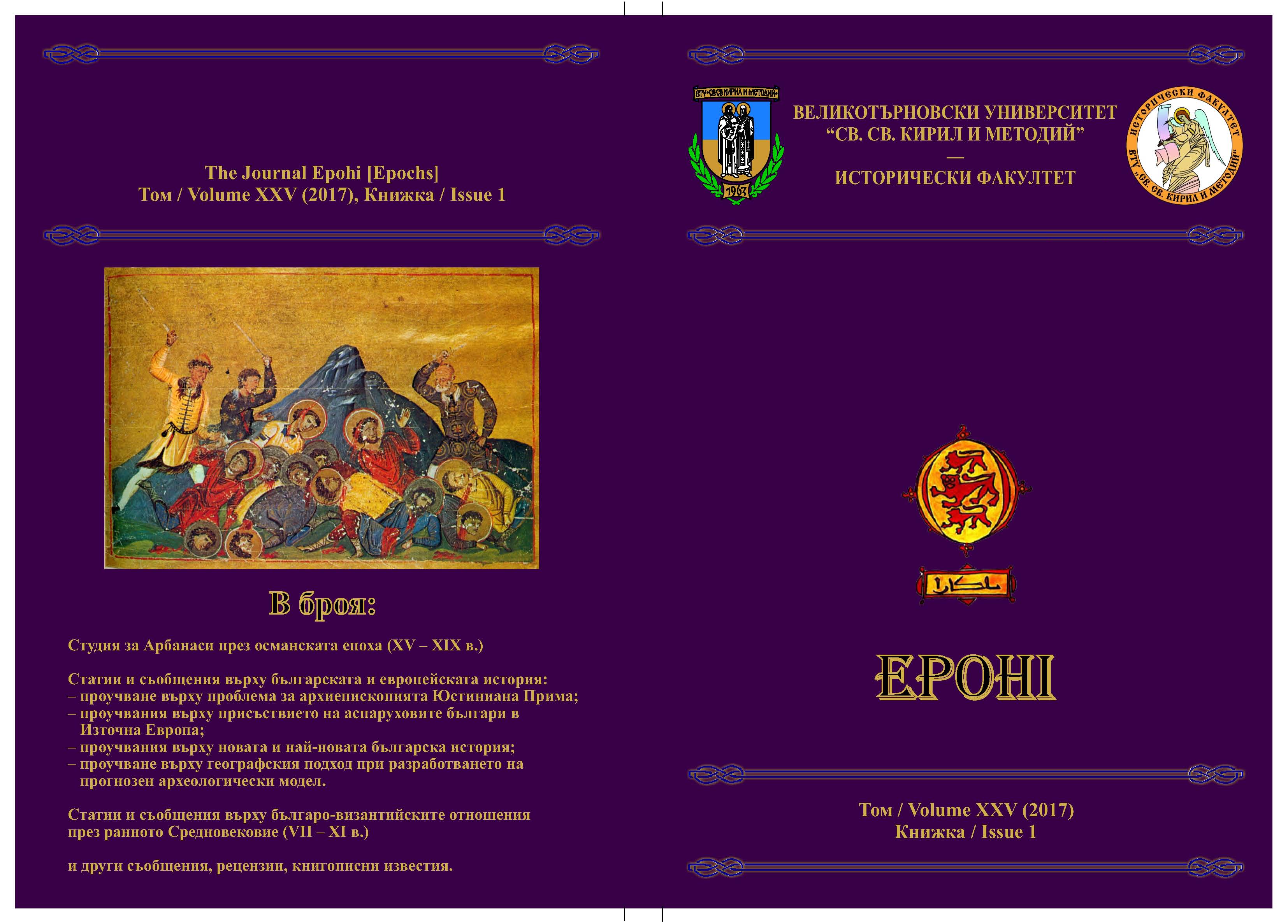
We kindly inform you that, as long as the subject affiliation of our 300.000+ articles is in progress, you might get unsufficient or no results on your third level or second level search. In this case, please broaden your search criteria.

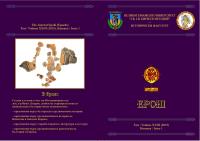
The present research examines the penetration and upholding of the evangelic ideas in Strumitsa and the adjoining villages Monospitivo, Koleshnitsa and Velyusa. The determination of the evangelic followers leads also to formation of ecclesiastical societies and functioning of educational institutions.
More...
In 2004 frescos in three lime pits and one mortar mixer in the northern yard of the church “St. 40 Martyrs” are found great deal of fragmented murals. May be considered with certainty, that the pictural art fragments, found in pits, lime pits and mixers from the north of the temple, were filled up during the main reconstruction of the church. This will say, that this material is associated with the first fresco painting of the temple in 1230. In the article, before all, we pay attention to one image, which is related to a church-donor‘s composition or a ruler’s portrait. This image, discovered and supplemented with new parts in the process of discrimination, bears the brightest marks of the nature and style of the first fresco painting of the church. 24 parts of the image under consideration are found. The middle part of the face of a man is preserved, with the nose, lips and beard, the silhouette of the hair-style and also a crown of cross-metal collars and gold-lace matter. The head is embraced by a nimbus, which suggests, that if the image is of a secular person, as it appears, it is of the Bulgarian ruler. In the case it is certain, that we are facing a rulers’ image, that can be identified with the Bulgarian Tsar Ivan Asen II, who had built thoroughly and fresco-painted to the end the temple “St. 40 Martyrs”. This, though fragmented, the image complements the imagination for the church-donor’s portrait in the Medieval Bulgaria and furthermore, the identification with the royal image of Ivan Asen II is a valuable source for the Bulgarian history.
More...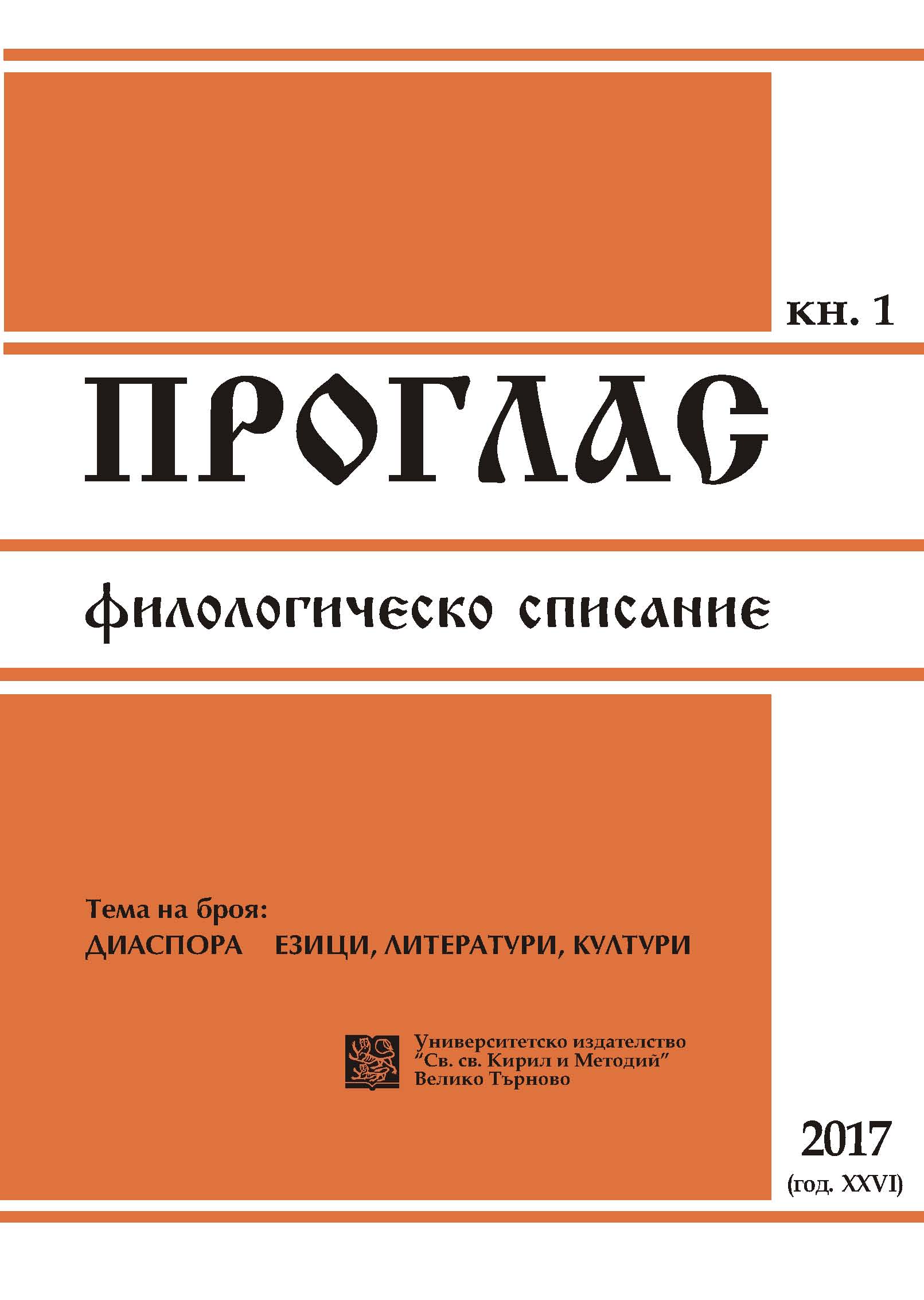
The paper focuses on the issue of forming and maintaining religious and ethnic identities within a European context defined by migration processes. The author considers certain relations and contradictions connected with the functioning of the two kinds of identity while also underscoring differences in the interpretation of terms such as “parish”, “congregation” and “religious group”. The sociological research presented in the paper has been carried out among Eastern Orthodox communities in Lodz and Cracow.
More...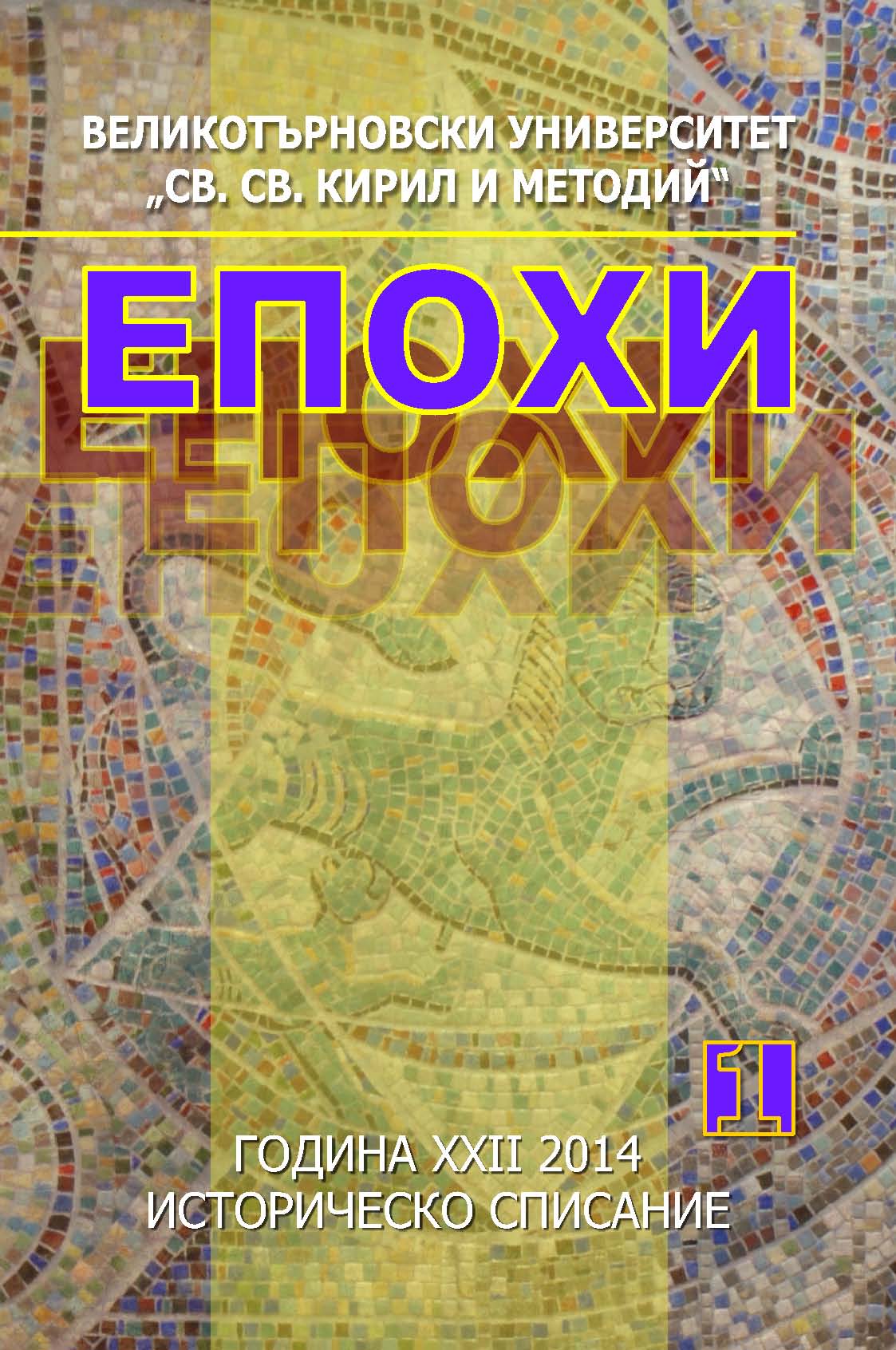
The present study examines the problem of transition of the Protestant School in Strumitsa from the control of the Ottoman Empire to the jurisdiction of the Ministry of public enlightenment of the Kingdom of Bulgaria. The new conditions are analyzed under which the protestant educational activity in the city is developing and the cooperation with the orthodox community is observed, which target is to preserve the national consciousness and increasing literacy among young Bulgarian population.
More...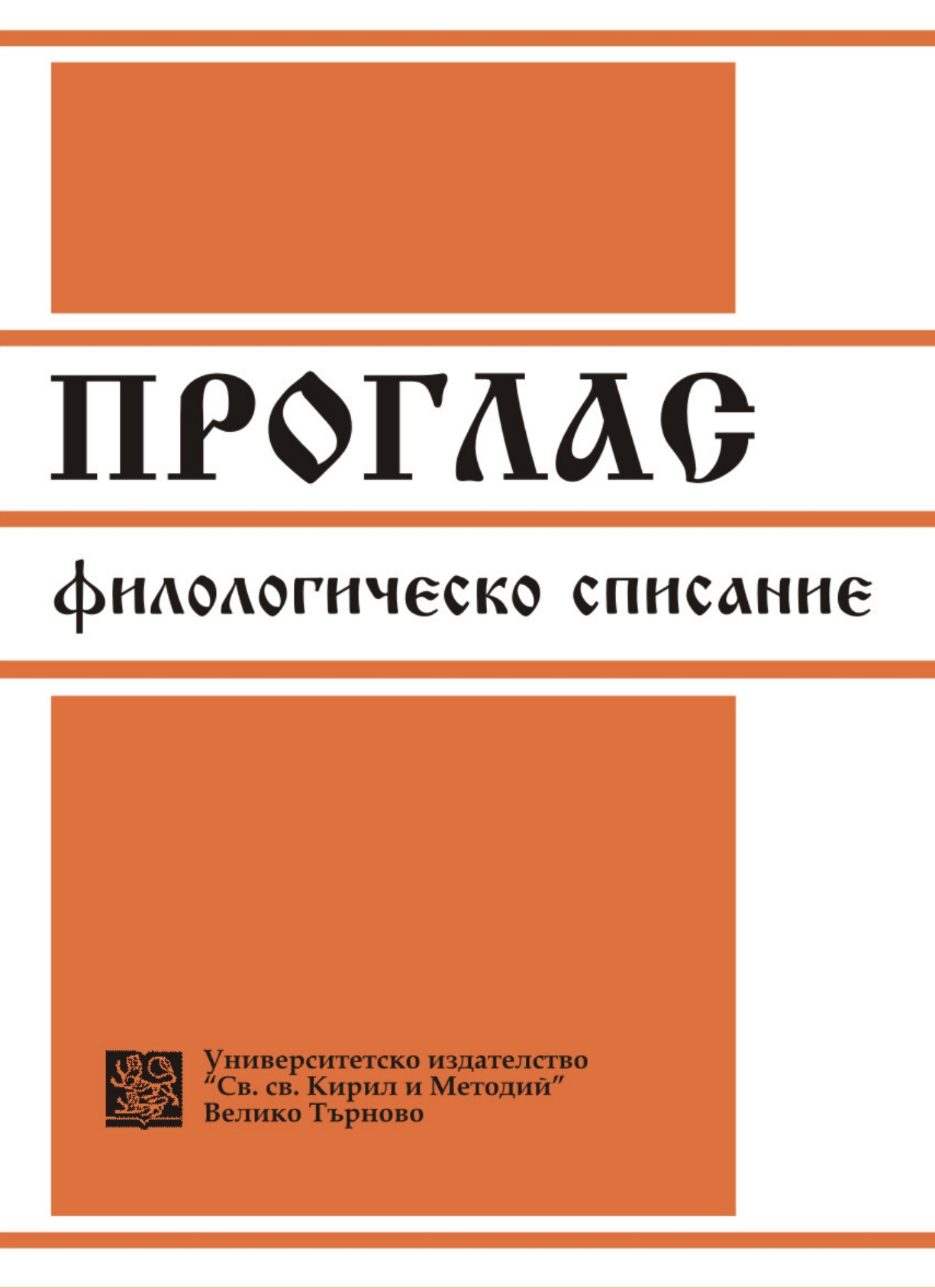
The greatest and most important works of Latin Christian literature date back to IV–V cc. These works are a result of the specific Christian conception of man and the world. In the present paper I explore the attitude of the Christian writers towards the world and its words, towards the verbal communication and the ancient non-Christian literature. The genres and kinds of the Christian literature, as well as its subjects, are also considered. Тhe highest, eternal meaning of the Christian sermon is explained.
More...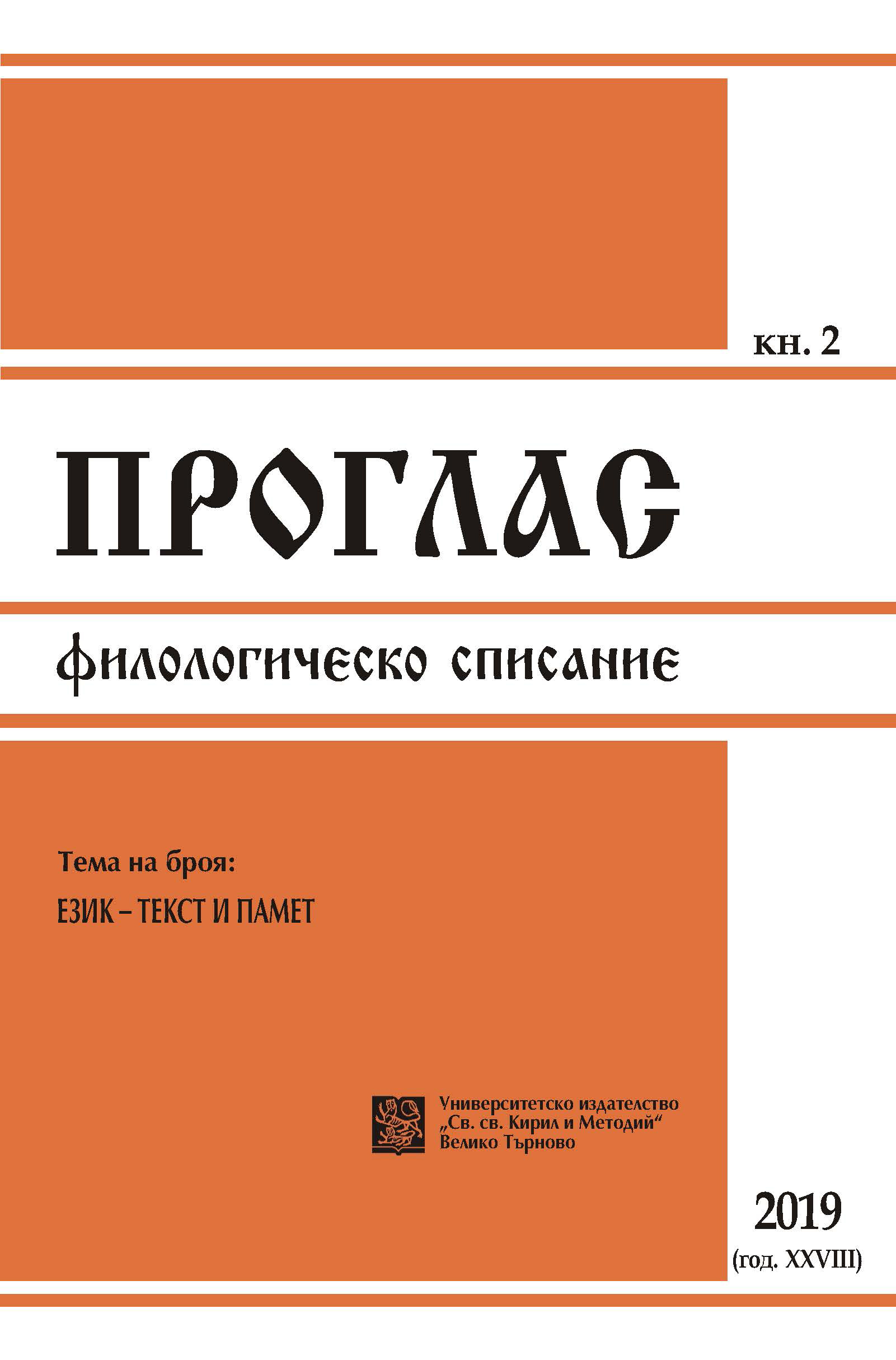
It is a well-known fact that the evangelists (excluding Luke) prefer the Present tense for their stories. Is there any particular grammatical code behind the account of the past which occurs in the Present tense (the Gospels were written at least two to three decades after the events they describe), as most theologians today think? The analyzed examples show the lack of such a code and the influence of oral Semitic speech.
More...
The article aims to establish the importance of a number of heretical and orthodox texts for Emilian Stanev’s novel The Legend of Sibin, Prince of Preslav. The observations lead to the conclusion that the sources and facts are not used verbatim but are subjected to the author’s idea of seeking the answer to the question “What kind of people are we?”
More...
The article proposes an analysis of three copies of the Pseudo-Chrysostomian Homily on the Beheading of St.John the Baptist. The textological, lexical and grammatical characteristics of Slavonic copies under examination,when compared with the Greek text, support the opinion that the homily was translated during the Old-Bulgarian period, in eastern Bulgaria, in the 10th century. The observations on the translation methods testify to its high quality and that the free choice of correlates established at some places often makes the text more accessible to the Slavic audience.
More...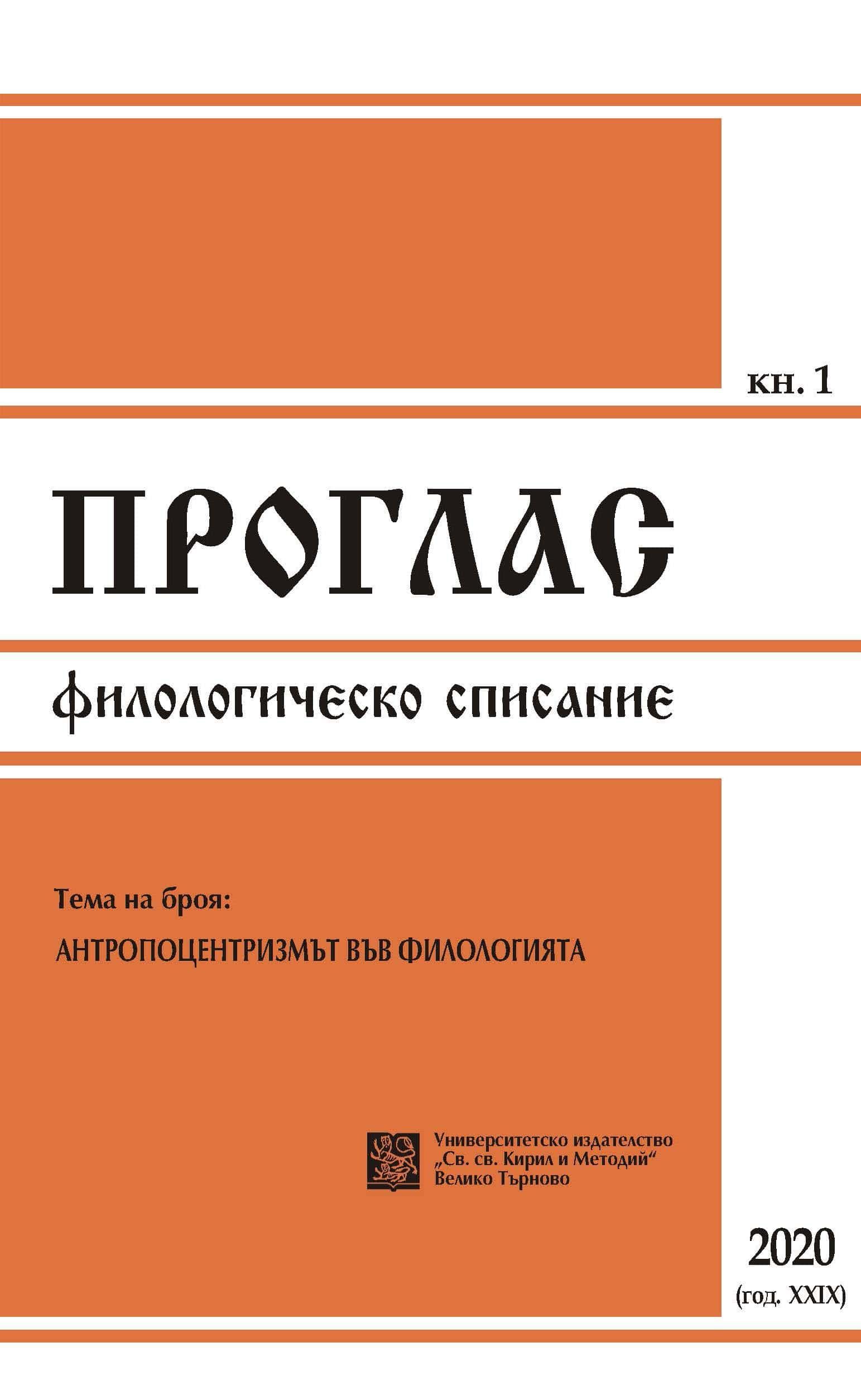
The article presents data about the inheritors of the Old Bulgarian Prayers for Every Occasion which are known to scholars thanks to the Glagolitic Euchologium Sinaiticum from the 10th century. They were discovered in the manuscript prayer- and divine service books kept in the Zograf library on Mount Athos. The respective euchological texts are described in the manuscripts in chronological order by century; they are identified in accordance with their Glagolitic prototypes and their Greek parallels are given.
More...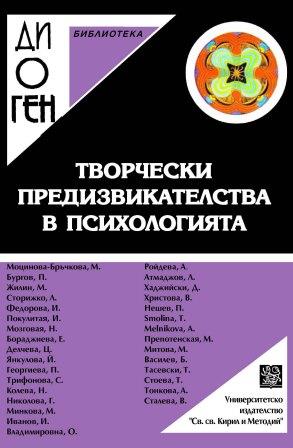
The article is devoted to the analysis of such a spiritual phenomenon in the history of Russian philosophy as its spiritual-academic branch, represented in the ХІХ century by the scientific and pedagogical activity of philosophy professors of four academies of the Russian Empire: St. Petersburg, Moscow, Kiev and Kazan. On the example of the Kiev and Moscow Academies, the unique features of this philosophy, manifested in the desire of their most prominent representatives P. Avsenev and F. Golubinskiy to combine elements of Orthodox “mysticism” with elements of European rationalist philosophy, have been considered. In the work of these representatives of spiritual and academic philosophy, mystical and scholastic traditions are combined. Both philosophers were distinguished by an extremely increased interest in mystical literature, in the sphere of everything irrational, in the phenomena of somnambulism, sleepwalking, and clairvoyance. They retained the glory of strange and mysterious thinkers. By virtue of the last argument, the author has turned to their work and tried to compare some features of their philosophical views.
More...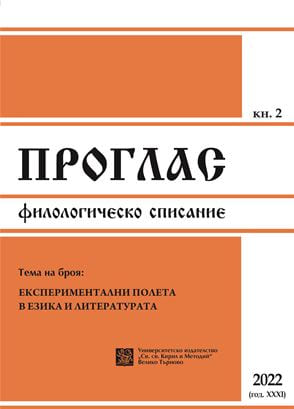
There are in the epistolary corpus of the great Latin Christian poet and writer of the 5th century Paulinus of Nola († 431) two letters to a soldier whose name is Crispinianus, which reveal the author’s outlook on military service (militia). This paper discusses the language and style of those letters. It also seeks out the arguments against military service and examines the way they are constructed. According to Paulinus, militia saeculi is not compatible with a fulfilling Christian life. The last section of the article examines the character, specifications and goals of the Christian alternative of military work: the work for Christ, also referred to as militia – militia Christi.
More...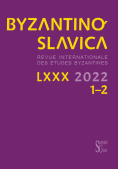
The article explores the argumentative context of the anti-Islamic work by Nicetas of Byzantium (9th century) titled Refutation of the Qur’an (Ἀνατροπὴ τοῦ Κορανίου). The study is based on three core passages of his work: Through a philological examination of the work’s foreword, the symbiosis of secular and ecclesiastical power expressed in the so-called Programma is examined. Then, the Apology of the Christian faith is unfolded in its main lines of philosophical argumentation presenting Nicetas’ train of thought from the “power of God” to the “Trinity of the Godhead”. Finally, the polemic’s Methodological Passages are examined, in which Nicetas sets out the foundations of his subsequent argumentation against Islam. The opus magnum of Nicetas of Byzantium is one of the most influential within Byzantine polemics against Islam until the Palaiologan Era. The present study is intended to contribute to a closer examination of his oeuvre and to place it in the historicaltheological context of his time.
More...
This study examines two marginal notes made in Old Permic script (also known as Abur) in a fifteenth-century manuscript that contains the Old Slavonic translation of Athanasius’ Orations Against the Arians. It begins with a brief discussion of the Old Permic script within the alphabetic systems of Late-Medieval Europe and explains the current state of research. After this, the authors explore the content and meaning of the marginal notes by studying the text of the Orations where these notes appear, the scribal peculiarities of the person who recorded them, and the religious context in which they were composed. The article raises the question of why the scribe chose to write these notes and draws a parallel between him and another Slavonic scribe, Vasily Mamyrev, from whom we have the first precisely dated case of Abur notes in Slavonic along with Greek inscriptions.
More...
Alexander of Macedon’s life as narrated in the Alexander Romance was inserted early in historiographic works in East Slavic. One of the most innovative details was the inclusion of the visit to Jerusalem of Alexander of Macedon in the First Book, following the wording found in the chronicle of George Hamartolos, an episode he had borrowed from Josephus. More surprising was the later interpolation within this interpolation of a part of Epiphanios of Salamis’ treatise De Gemmis, precisely the part describing the robes of the high priest in the Jewish temple and its relation to the filiation of the tribes of Israel. Neither addition was accidental, and their resonances echoed loudly in the limited literary corpus in Kyivan Rus’ dealing with sacred kingship. The present article explores the functionality and instrumental use made by Kyivan scribes of the figure of the Macedonian king and his special relation to the chosen people of God. It was by means of these additions that Alexander acquired exclusively in East Slavic the special status of a king whose deeds are key in the salvation of Israel and of all Christianity.
More...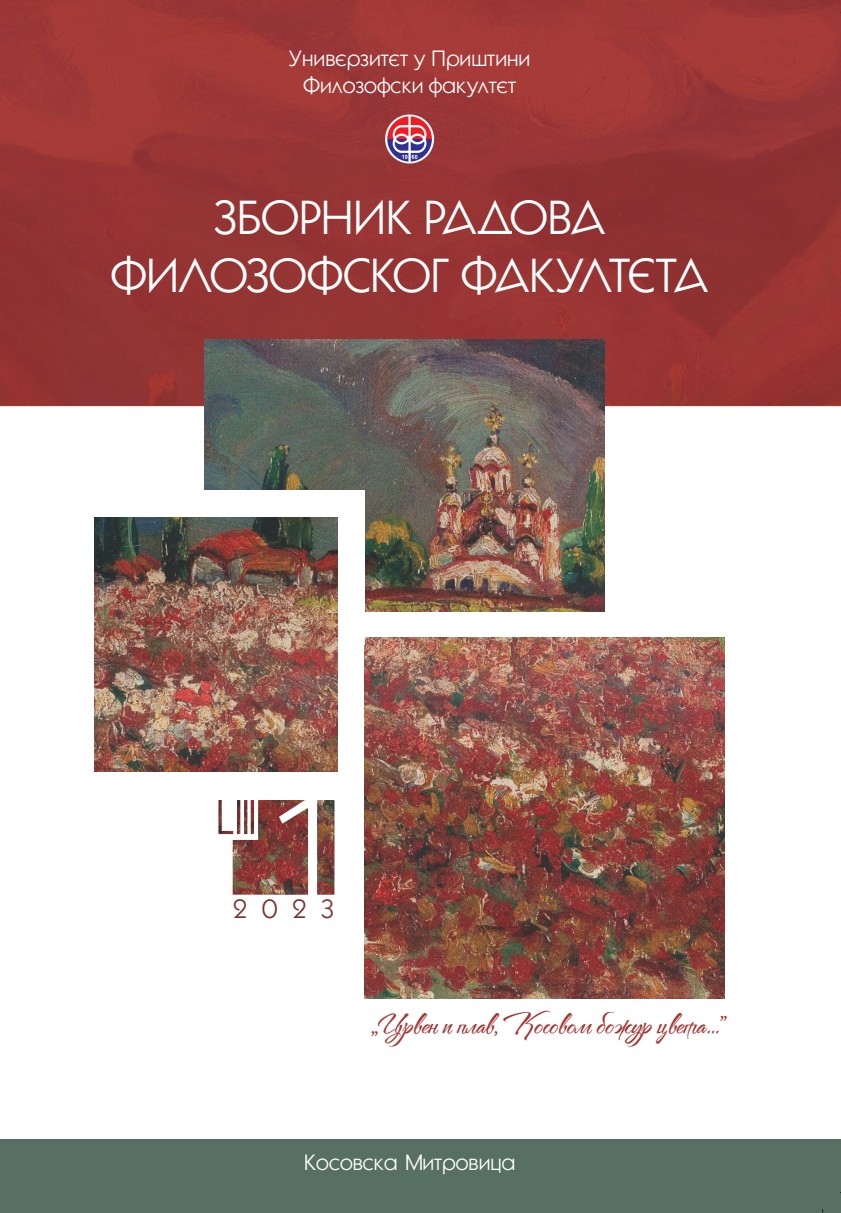
This story of the life paths of the teachers and students of the seminary is told on the trail of a photograph, that is, a tableau of the graduates of the Serbian Orthodox Theological-Teaching School in Prizren, in 1896. It is about their contribution to education, church, Christianity, theology, literature, ethnology, and science. Like other photographs created in studios throughout the Serbian cultural space, they are more than documents, they are an inexhaustible treasure for historians and other cultural workers. They visually remind us of our ancestors and tell us about a time that no longer exists, the time of nobility. Professors and graduates are dressed according to the European style of clothing, unusual for those occasions and that time, when professors had to wear a fez, so as not to be distinguished from citizens of other religions. The place and time of the photograph is the 19th century, the Ottoman Empire, Kosovo Vilayet, the ‘Dark Vilayet’! An authentic 1896 photo from Prizren is a true rarity. There is no information on taking photos in the archival material of the Theological School, but one thing is certain, the photography was created in Prizren that year, but the name of the photographer is unknown. There are 27 people on the tableau, rector Ilarion (Ivan) Vesić, eight teachers, Trivun Dimitrijević, Kosta Lozanić, Mihailo S. Tasić, Milan Gajić, Sava Jakić, Danilo (Nedeljković), Vasilije Stojanović, Apostol Filipovic, and 18 graduates, Toma Burković, Ljubomir A. Bulatović Ibrijski, Milutin V. Vukić, Janićije (Naća) Živković, Janko Đorđević, Haralampije Ilić, Pantelija Mandić, Dusan Nekic, Milan Nikšić, Radivoje R. Orlović, Atanasije Petrović, Blagoje Petrović, Obrad Popović, Nikola Rožić, Mladen Stojanović, Petar Ćićarić, Vladimir Popović and Zdravko Tasić. This is the first generation of high school graduates who completed the six-year Serbian Orthodox Theological-Teaching School. The Council of the Theological School declared them capable of being teachers and they were issued with certificates of teacher training. When they finished their education, they were between 17 and 26 years old. Except for one student who continued his education at the Belgrade Theological School, all the others were appointed as teachers. Obviously, the need for trained teachers throughout Old Serbia was great that year. In further service, five students were ordained as priests, one teacher became a merchant. Only one former student finished the Spiritual Academy, and two continued their education after the Theological School. Of the 18 students, five were from Prizren, three from the surrounding area. For the first time, a student from Bosnia attended the Theological School. Four young men were from Macedonia, two from Montenegro, two from the Kingdom of Serbia, and one from Kosovo. Of the nine teachers, four had university degrees, two were monks, which was a requirement for the Theological School. In different years, they were able to make contact with the students and help them not only as teachers, but also as guardians, because it was a boarding school. The goal of the Theological School in Prizren was to educate and form an educated staff of teachers and priests, which it successfully realized. Teachers and priests in Old Serbia were, in addition to their vocation, a kind of national workers and cultural activists because the Theological School moulded them as patriots.
More...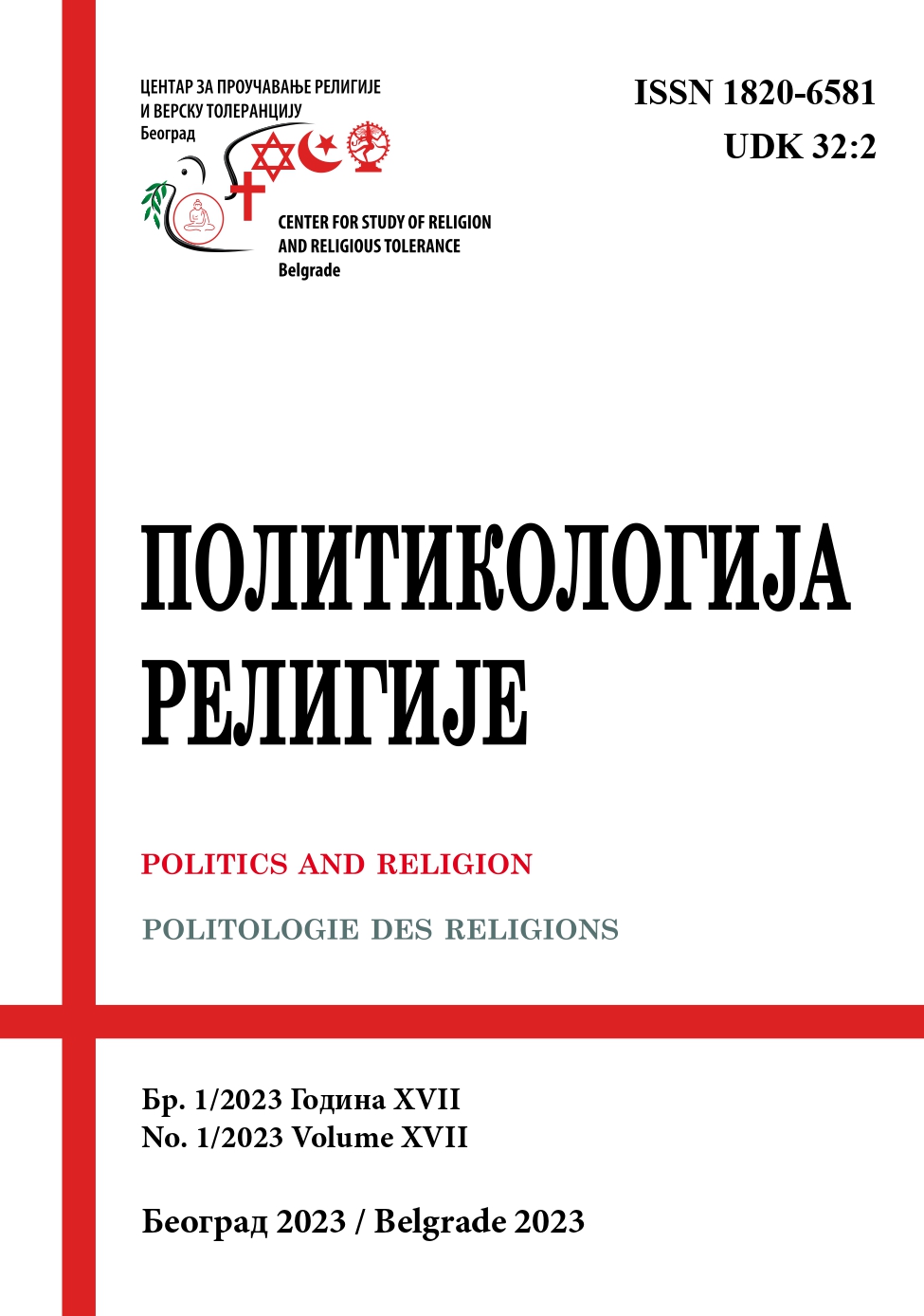
Since its inception in 1994 as an organised group or network with a claim on rulership of the country, the Taliban has been generally described as an “Islamic movement” committed to the implementation of sharia in Afghanistan. Such description may accord well with the group’s professed objective but reveals itself reductive at best and misleading otherwise on closer scrutiny. This article argues that the “Taliban” represents a hybrid phenomenon that deploys religious and political narratives just as it deploys organised crime in pursuit of maximum power and profit.
More...
Terrorist movements express their discourse through messages, which they are keen to send a specific state or people or the whole world. However, terrorist blasts are not the only message, but rather ideological reasoning accompanies every terrorist act. This was clearly observable in the discourse of Al-Qa’eda, especially as the group tried to rely on considerable grievances which cannot be denied. Al-Qa’eda has a wide and accumulated experience in turns and events, which make it a phenomenon worthy of study. With the development of Al-Qa’eda’s experience, the Islamic State of Iraq and Syria’s power, speed of spread, ascendancy and brutality since it took control of Mosul without noticeable resistance on June 20, 2013 has been remarkable. This moment was a point of transformation in the media’s view of the organization. And it becomes clear that any of both organizations will not be sustainable so long as they lack justifications considered reasonable by outside observers and lack grievances to push their soldiers to recruit youth and convince them with their media arguments.
More...
This article examines the extent to which the Palestinian issue is exploited to promote cross-border terrorist movements. The analytical descriptive approach is employed to explore the evolution of the terrorist organizations, and trace the ideology, means, and content of their media discourse. The article reveals that the extremist groups utilized the value, sanctity, and nobility of the Palestinian issue to influence Arab and Islamic societies in an attempt to give legitimacy and credibility to their presence, media discourse, and terrorist acts; disseminate their extremist ideologies; rally support and recruit new elements, and emotionally influence the public perception. The article also concluded that these terrorist organizations refrained from targeting the Israeli occupation and opposed the Palestinian national narrative about the national and political nature of the Palestinian struggle.
More...
The term terrorism is not subject to a universally accepted definition. However, it is generally used to describe the use of violence against civilian targets to spread fear and distress and thereby achieve ideological and/or political objectives. Specific acts of terrorism, whether national or international, have been proscribed by respective laws. The Taliban’s return to power in Afghanistan after Kabul’s collapse in August 2021 has raised an important question: are the Taliban different from other terrorist organizations (e.g., al Qaeda, ISIS)? This debate is significant because the groups share ideological similarities and execution practices; and at present, the Taliban face challenges of both intent and capability vis-à-vis ceasing acts of terror and ending ties with other terrorist organizations. This paper argues that the lack of a universally agreed definition of terrorism may not affect the investigation and prosecution of the Taliban’s terrorist offenses. In this regard, this paper critically appraises three factors—accountability, ties with terrorist organizations, and the inclusion of Taliban members’ names in the global sanctions regime. It also demonstrates why the international community is obligated to take both legal and ‘non-legal’ actions against the Taliban to avoid the normalization of terrorism.
More...